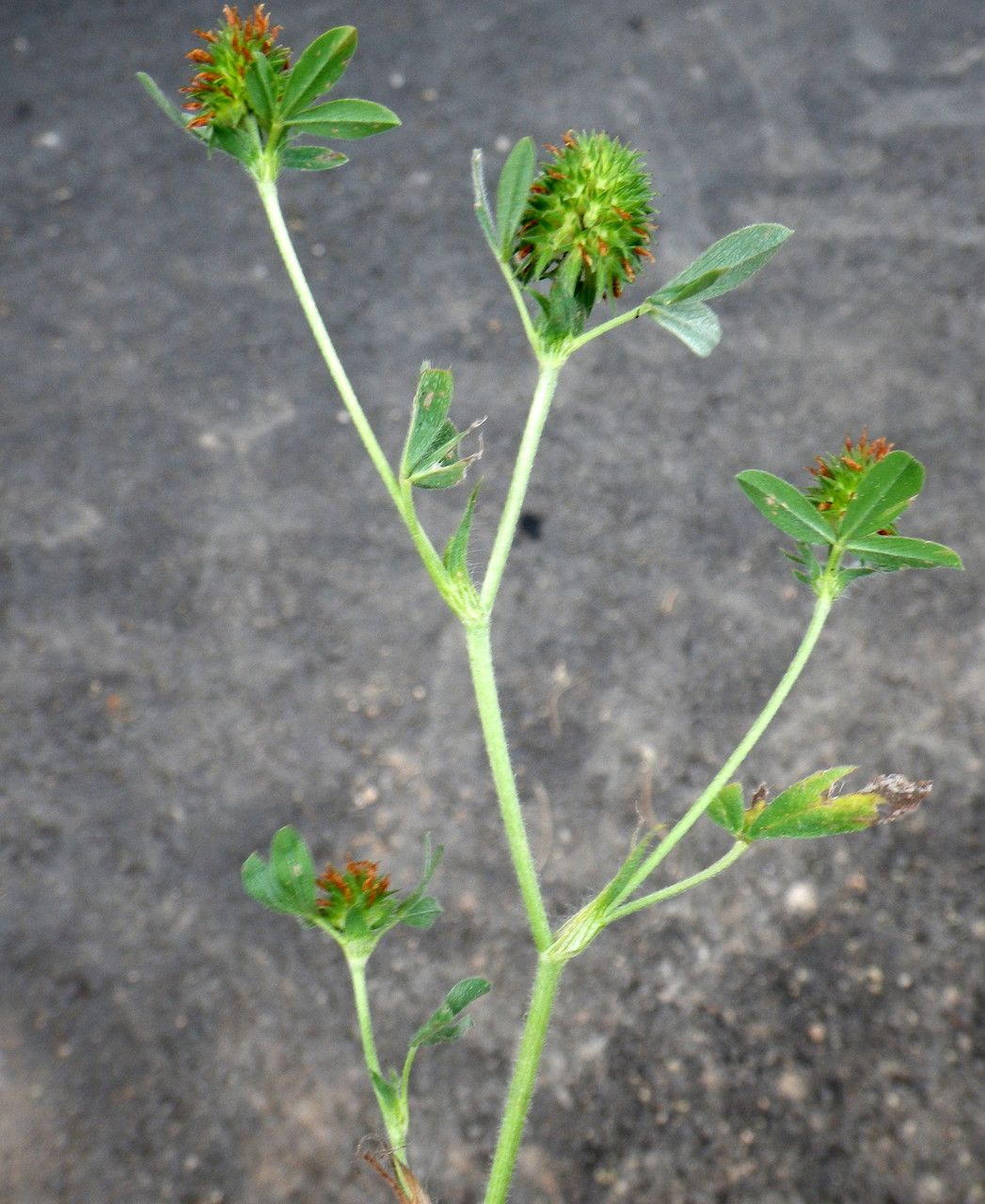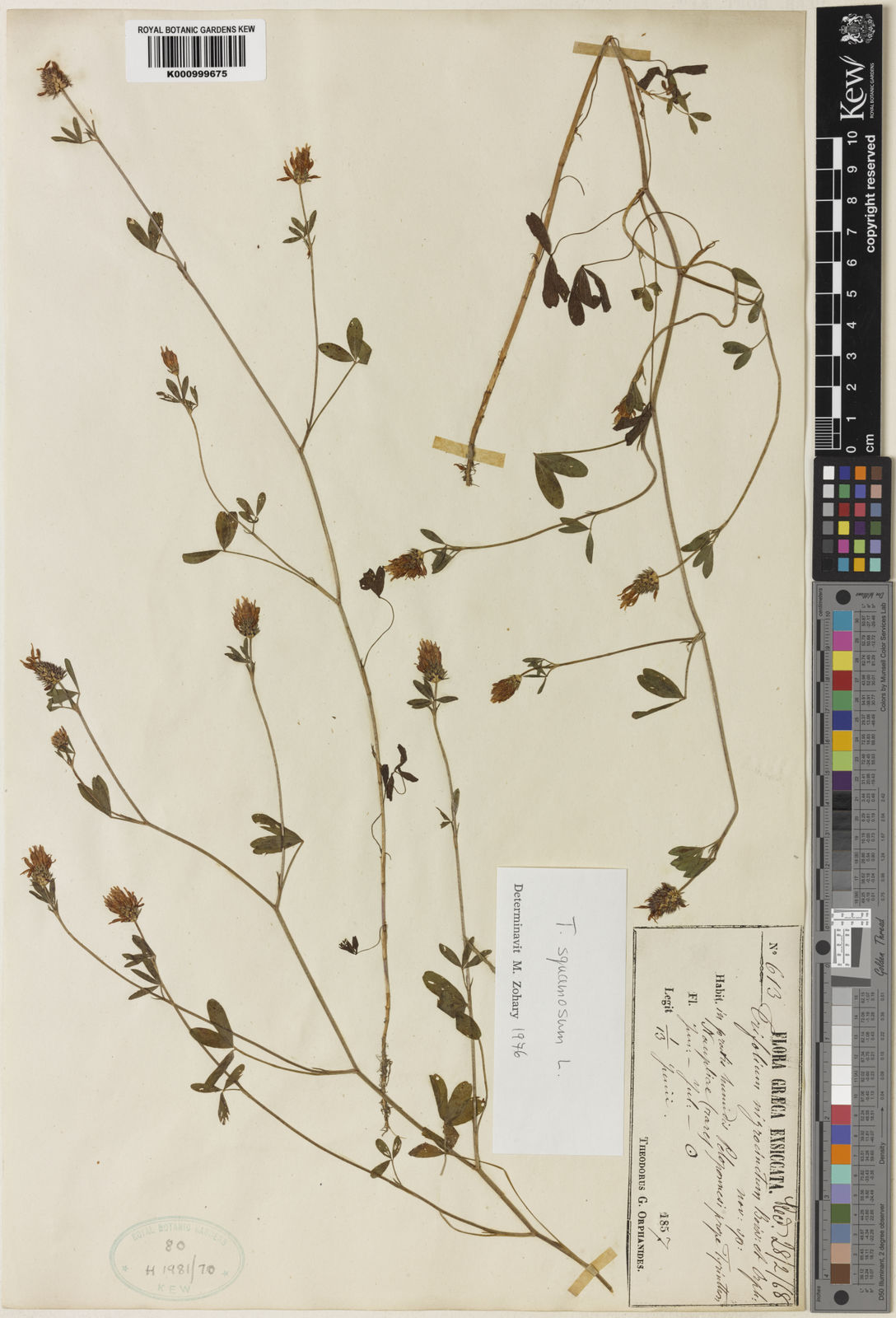Scaly Clover
trifolium squamosum
Also known as: ["Scaly Clover"]
Overview
A species of clover native to parts of Europe, characterized by its scalloped leaflets and small, white flowers.
Benefits & Perks
["wildlife attractant (bees, butterflies, birds)","low maintenance","drought tolerant"]
Botanical Classification
| Phylum: | Magnoliophyta |
| Class: | Magnoliopsida |
| Order: | Fabales |
| Family: | Fabaceae |
| Genus: | Trifolium |
| Botanical Name: | Trifolium squamosum |
Plant Characteristics
Basic Information
- Category: Flowers
- Suitable Location: garden bed or container in a location with good air circulation
- Suitable For:
- Is Weed: No
- Allergenicity: low
Environmental Needs
- Climate: {"temperatureRange":"5–30°C"}
- Hardiness: {"zones":"6–9"}
- Misting: rarely required, only if ambient humidity is very low
- Drainage: Fast-draining to prevent waterlogging.
- Soil Type: Well-draining, loamy soil with added organic matter.
Maintenance Level
- Maintenance Level: low
- Toughness Level: moderate
- Pruning Frequency: Annually in early spring or after flowering.
- Pruning Intensity: Moderate; remove up to one-third of old growth to rejuvenate the plant.
Care Details
Ideal Sunlight Coverage:
Bright indirect light for 6–8 hours daily; adjust to partial shade in intense summer sun.
Sunlight Tolerance Tips:
Acclimate plants gradually to direct sun; protect from harsh midday sun; move indoors during extreme heat or cold.
Care Requirements
Care Difficulty
easymoderate
Sunlight
full sun to partial shade
Rotate plant weekly for even growth; use sheer curtains to filter intense light; avoid direct afternoon sun.
Watering
every 7–10 days during active growth, reduce in winter
Water thoroughly but infrequently; ensure proper drainage; avoid wetting foliage.
Soil
well-draining, loamy soil with moderate organic content
pH: Slightly acidic to neutral (pH 6.0–7.0).
Ensure pots have drainage holes; avoid heavy clay soils; test pH periodically.
Temperature
Prefers 60–75°F (15–24°C); tolerates mild fluctuations but avoids extremes.
Avoid sudden temperature changes; protect from frost; maintain moderate indoor temps.
Fertilizing
every 4–6 weeks during growing season, none in winter
Fertilize only when actively growing; flush soil occasionally to prevent salt buildup; use organic options for gentle feeding.
Propagation
Methods
Stem cuttings or division; stem cuttings are more common for home growers.
Step-by-Step Propagation Guide
- Take a 4–6 inch cutting.
- Remove lower leaves.
- Dip in rooting hormone.
- Plant in medium.
- Maintain humidity.
Best Time: Spring or early summer when the plant is actively growing.
Environment
High humidity (70–80%), indirect light, and warm temperatures (65–75°F).
Medium
Well-draining mix of peat, perlite, and sand.
Hormone
Rooting hormone is recommended for faster root development.
Timeline
Roots develop in 3–4 weeks; new growth appears in 6–8 weeks.
Tools Needed
Pruning shears, rooting hormone, small pots, misting spray bottle.
Quick Tips
Use healthy, non-flowering stems; keep soil consistently moist; provide bottom heat for faster rooting.
Pruning & Repotting
Pruning Guide
Method
Pinch back tips for bushier growth; cut stems just above a leaf node.
Pruning Plan
Remove dead or leggy stems to encourage bushier growth and better flowering.
Tools
Clean pruning shears, gloves.
Checklist
Disinfect tools; prune dead/damaged stems; shape for airflow; clean up debris.
Repotting Guide
Best Season
Spring, before the active growing season begins.
Pot Size
Increase pot size by 1–2 inches in diameter; ensure drainage holes.
Method
Remove plant gently; trim roots if needed; place in new pot with fresh soil; water lightly.
Suggestions
Repot every 2–3 years or when roots outgrow the pot; refresh soil to maintain vigor.
Checklist
Check root bound status; prepare new pot; trim roots; add fresh soil; water lightly.
Advanced Care Tips
Watering Mastery
Watering Checklist
Check soil moisture; water deeply; ensure drainage; avoid wetting leaves.
How to Apply Water Properly
Water at the base of the plant, ensuring moisture reaches the root zone; allow excess water to drain away; water in the morning to reduce evaporation and fungal risk.
Watering Schedule Tips
Water deeply once the top inch of soil feels dry; reduce frequency in winter to prevent root rot.
Soil Improvement
Add perlite or sand for drainage; incorporate compost for fertility; use mulch to retain moisture.
Temperature Stress Management
Signs of Temperature Issues
Wilting, yellowing leaves, or stunted growth in extreme heat or cold.
Cold Stress
Slows growth, causes leaf drop, and may lead to root damage in prolonged cold.
Solution: Move to a warmer location; insulate pots; avoid cold drafts; reduce watering.
Hot Stress
Leaf scorch, wilting, and reduced flowering due to excessive heat.
Solution: Provide shade; increase humidity; water more frequently; ensure good air circulation.
Fertilizing Guide
Fertilizing Checklist
Check growth phase; dilute fertilizer; apply to soil; avoid foliage contact.
Fertilizing Method
Use balanced liquid fertilizer diluted to half strength every 4–6 weeks during growing season; avoid fertilizing in winter.
Common Problems & Solutions
Toxicity Warning
Cats
Non-toxicTrifolium squamosum is not known to be toxic to cats. There are no documented cases of toxicity in felines from exposure to this plant.
⚡ Toxic If:
Generally non-toxic
Dogs
Non-toxicTrifolium squamosum is not known to be toxic to dogs. There are no documented cases of toxicity in canines from exposure to this plant.
⚡ Toxic If:
Generally non-toxic
Humans
Non-toxicTrifolium squamosum, commonly known as scabious clover, is not considered toxic to humans under normal circumstances. It is not known to produce any significant toxic compounds that would cause adverse effects upon ingestion or contact.
⚡ Toxic If:
Generally non-toxic
Frequently Asked Questions
Q: Is Trifolium squamosum toxic to pets?
A: No, it is non-toxic to dogs and cats.
Q: Does this plant attract wildlife?
A: Yes, it attracts bees, butterflies, and birds.
Q: How difficult is it to care for?
A: It is easy to care for with low maintenance needs.
Quick Reference
| Family: | Fabaceae |
| Care: | easy |
| Light: | full sun to partial shade |
| Water: | every 7–10 days during activ |
Get Expert Care Tips
Download the Plantious app for personalized care reminders and plant identification!
Google Play App Store






